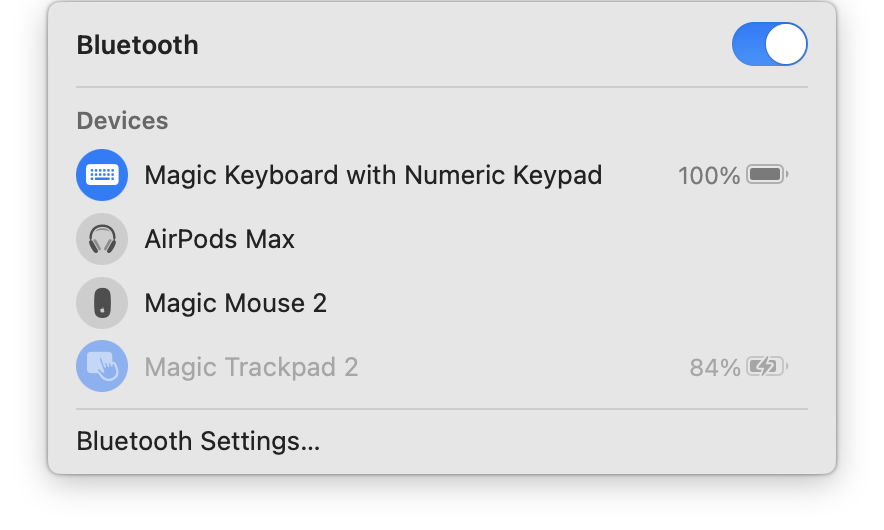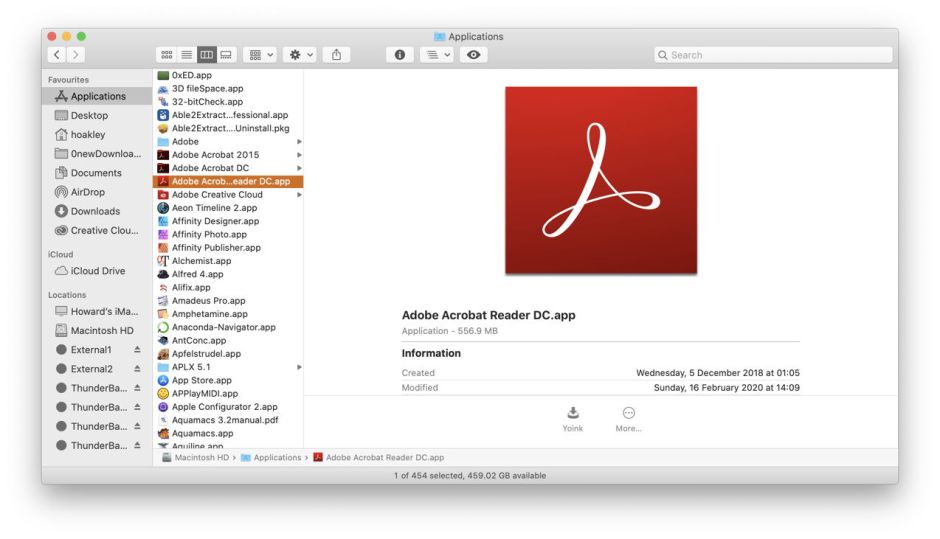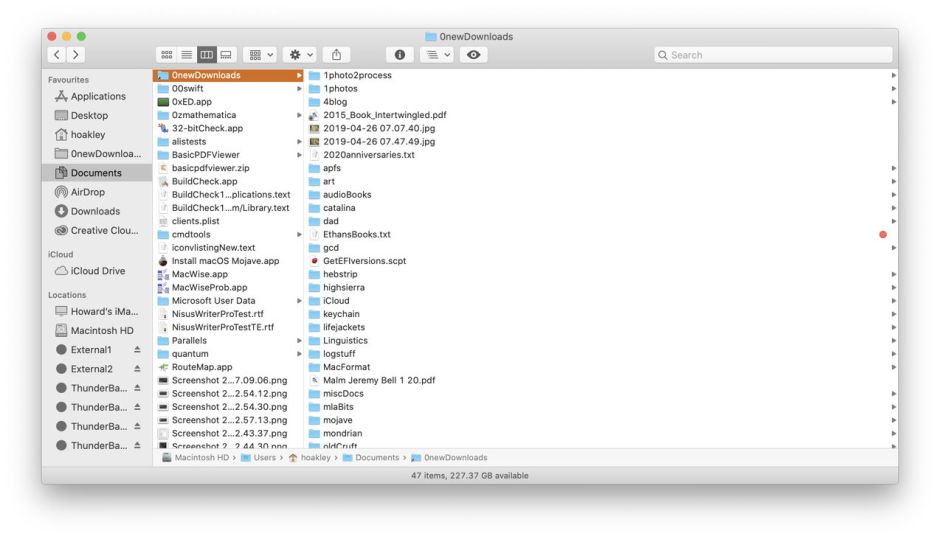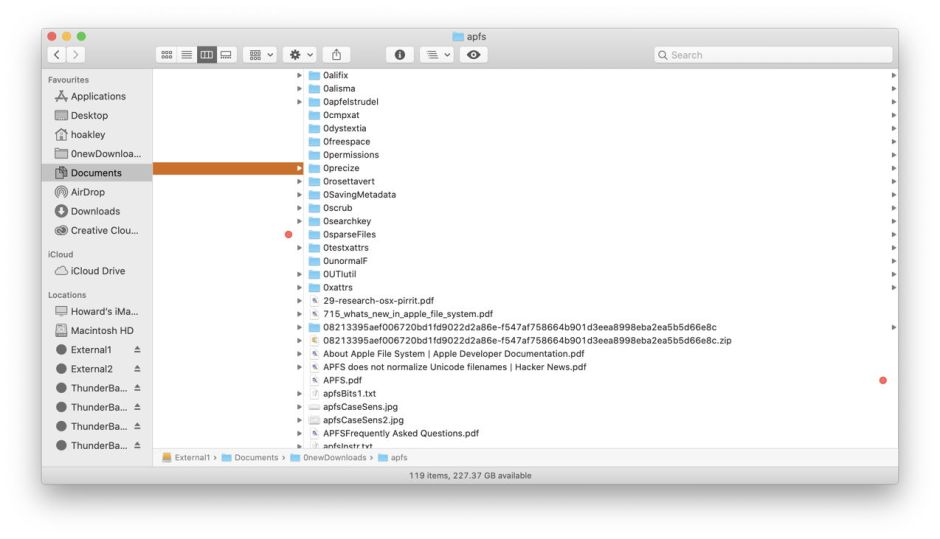This is a short summary of those known bugs that have been fixed in macOS Ventura 13.0, and significant bugs that remain, either carried over from Monterey or new with 13.0.
Fixed
The most prominent bug left in Monterey which appears to have been fixed in 13.0 is the Finder Find memory leak. This affected the Find command in the Finder’s File menu, and leaked memory with each search performed in the Finder window. On large systems with many hits, it was easy for the Finder to exceed 5 GB of memory, which wasn’t freed even when closing the window. Initial testing here shows that memory used is now freed properly, and, when used normally, there should be no progressive and irreversible rise in Finder’s use of memory.

A less severe but equally annoying bug in the Bluetooth menu bar item that has persisted for several versions of macOS has also been fixed. When Bluetooth peripherals such as Apple Magic Trackpads and Keyboards are connected for charging, their charge level is again displayed in the Bluetooth menu, making it easier to tell when they’ve been fully recharged.
Apple’s security update release notes list a large number of significant fixes to address vulnerabilities, initially 66 but rising to 77 at the last count. In contrast, release notes for Monterey 12.6.1 list only 9 fixes. Although not all bugs fixed in 13.0 are present in 12.6, there’s still a large gap that implies that many known vulnerabilities remain in 12.6.1 (and in 11.7.1).
Still not fixed
The most serious bug which has persisted from Monterey into Ventura is failure of its Content Caching server to deliver some macOS security updates that install correctly, as explained here. Although I have seen this disappear for the occasional update, it still affects many using Content Caching servers running Ventura. This has been reported to Apple, and a permanent fix is still awaited.
One of the oldest prominent bugs in macOS, which dates back at least nine years to OS X 10.9 if not before, is a flaw in the Finder calculating the width of columns, which I’ve named the Finder column width bug. I’ve been moaning about it through successive releases of OS X and macOS over the last eight years. If you use Finder’s column views, it’ll catch you sooner or later.
It’s simple to demonstrate. Open a new window in the Finder, and ensure that it’s set to Column View. Select your Documents folder in the sidebar, then select another folder containing more files and folders in the first column, within Documents.

Now click on your Applications folder in the sidebar to switch to that folder. Select an app (one with a long name can sometimes be ideal).

Then click on the Back button to switch back to your previous view of the sub-folder within Documents. More often than not, you’ll now see the second column fill the remaining width of the window, and browsing any deeper into those folders is almost impossible, as the column width settings go haywire.


The simple way to recover is to select a different folder in the first column, which should restore sensible column widths. As this also happens on Apple silicon Macs, it must be the oldest Universal Bug of them all.
New bugs
Perhaps the most important of the bugs that are new to Ventura is a problem in handling Full Disk Access and other privacy settings for apps using Endpoint Security. This most commonly affect third-party security products such as Malwarebytes and Objective-See’s BlockBlock. If you use any software that relies on Endpoint Security, consult its support documentation for further information as to how you can work around this bug until Apple fixes it. For instance, it’s explained in full and a workaround suggested by Thomas Reed of Malwarebytes here.
This is now reported to have been fixed in macOS 13.0.1.
If you use devices with your Mac that present themselves as ‘fake’ virtual volumes, then those may not work properly in the Finder. Alasdair Allan has described this in detail for loading code onto Raspberry Pi Pico and similar devices. He thinks this is the result of a bug in macOS, and explains how you can work around it using Terminal commands. This is likely to affect similar products from other manufacturers, whose vendors should be contacted if you experience similar problems.
Apps and scripts that rely on calling panes in System Preferences are likely to have been broken by Ventura’s new System Settings. Rich Trouton has compiled a valuable list of replacements supported by the open x-apple.systempreferences: command in Terminal.
If you know of other serious bugs that have been properly validated, I’d be grateful if you could describe them, or provide links to full descriptions that show the problem is in macOS, rather than the app concerned.
Finally, we should thank the many teams of engineers in Apple for all their work in fixing bugs, and all those who have diligently reported bugs to them, particularly during Ventura’s beta-testing.
